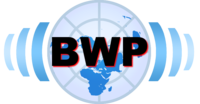The challenges faced by early-stage startup are unique. There is no existing user base to piggyback on with network dynamics and little data to determine the most effective entry points that lead to a paying customer. Also, many startups are too small to bring on a PR staff, and most founders are not educated in the best tactics for reaching out to media. The good news is that social media can enable you to reach potential customers without depending on traditional outlets, and sometimes these tactics will work hand-in-hand.
1. Just Be Helpful
Leo Widrich, co-founder of Buffer, discovered in the early stages that although Buffer was small, he could go one step up and focus on Twitter, which has a massive audience (at the time, Buffer's primary use was related to scheduling tweets). Widrich identified common questions people had about how to be more effective at Twitter, and saved keywords as Twitter searches in TweetDeck columns. Then, he'd take the time to help people out and offer a few solutions or tools, sometimes not even mentioning Buffer.
"This technique was very, very helpful for us, not just for traffic but also to build the community," says Widrich, noting that people he helped often continued to engage by reading his blog or retweeting him long after he initially offered help.
2. Guest Blogging
Investor and entrepreneur Mark Birch recommends guest blogging in lieu of the press release, and he offers some tips for getting your own content onto well-trafficked blogs. He recommends writing your own blog as a way to show how you write and also to learn what makes a successful post — something both Widrich and his co-founder, Joel Gascoigne do.
Initially, Widrich found press outreach to be unsuccessful, so his co-founder, Joel Gascoigne, suggested they do the writing themselves.
"That's when we kind of discovered the power of guest posting, great content that we write for others," Widrich explains. Smaller sites, which are often a side project run by someone who has a day job, were especially receptive to running guest posts. Even if they wanted to write about Buffer, says Widrich, they just didn't have time. But providing content to them was a win-win situation.
Widrich wrote about 150 posts in six months and grew the service to 100,000 users. He found that interlinking content and product was key — since Buffer solves a problem for social media users (specifically Twitter), he wrote posts with titles such as "How to Avoid Spam on Twitter" or "Five Ways to Make the Most Out of Twitter." People who found the article helpful would see who wrote it and notice he works on a Twitter app, and thus be more likely to check it out.
3. Traditional PR
The draw of media coverage is that one article on a major site can provide more traffic in a month than all other marketing efforts combined. It helps to be backed by a big-name VC or to hire a well-connected PR agency, but those aren't the only ways to score some press. What worked for Buffer was making press outreach a habit, not a one-time thrust with each major product launch.
Widrich suggests four story types that could work for any startup: amazing user data, a new feature, big milestone and a disaster (like a related service shutting down) which allows your product to meet a need. Also, a variety of approaches gives you a reason to keep the conversation going with reporters, so they'll have background on you when you have major news to break.
4. Excellent Customer Service
Social media allows for immediacy that is instant gratification for users, especially users experiencing a bug. On a larger scale, this is called crisis communications, known only too well by KLM Royal Dutch Airlines, which turned to social media after a volcano eruption in 2010 caused flights to stall for six days and traditional methods proved unsatisfactory. The airline now takes a progressive approach by responding to every social media user comment or question in 90 minutes and resolving every issue in 24 hours.
Jan Rezab, CEO of Socialbakers, the company that provides analytics to KLM, notes that social media is a cheaper channel than telephone, and it also offered an opportunity for upsells and increased loyalty. Early-stage companies can take advantage of a small user base by showing customers how valuable they are.
"People love to recommend things that are personal," Widrich says. Buffer signs automated emails with the founder's name and invites users to reply, communicating that the team is approachable and responsive. This, in turn, drives word-of-mouth user acquisition.
How does your business grow its user base? Tell us in the comments.








0 comments:
Post a Comment